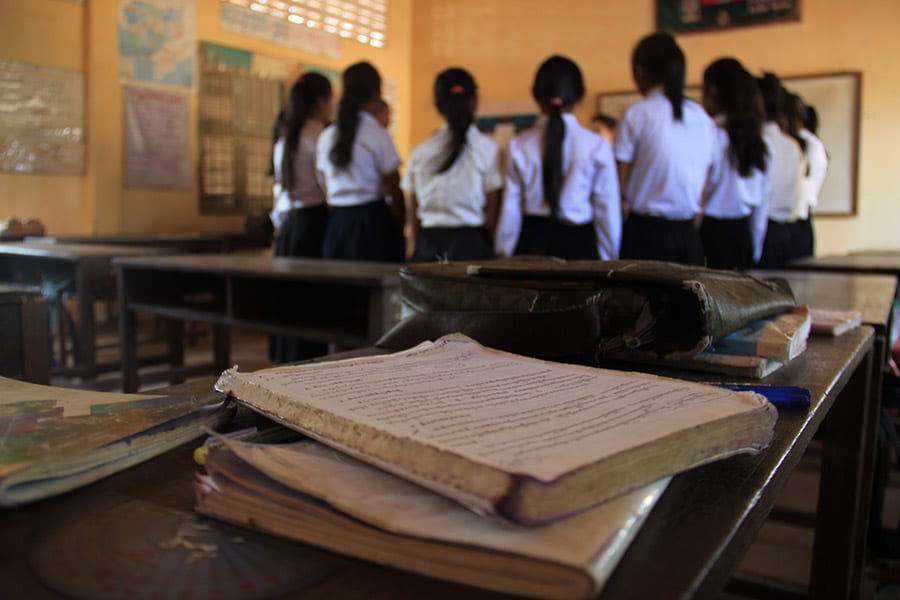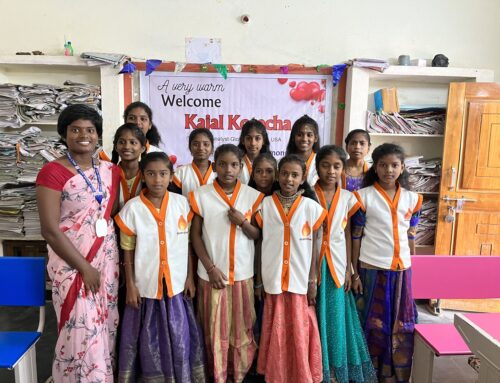Educating Girls In 3rd World Countries Brings ROI
Educating girls is the key to prosperity in the Third World, according to a study by Kenneth Hadden, an associate professor of agricultural and resource economics.
Hadden and his co-author, sociologist Bruce London of Clark University in Worcester, Mass., found that developing countries that educated girls to the same degree as they educated boys benefitted from lower birth rates, longer life expectancies, lower mortality rates and higher economic growth 25 years later.
It was known in theory – from studies conducted as early as the 1960s – that women’s education is an investment that critically influences the social and economic development of a nation. Hadden and London’s large cross-national study, which examined about 80 developing countries in Latin America, Asia, Africa and the Middle East, offers quantitative data showing that the countries that educated girls in the 1960s had fewer births in the 1980s.
The countries with the highest level of gender equality in primary and secondary schools experienced the largest declines in fertility rates and had the largest reduction in infant and child mortality rates, according to the study, which was completed in 1995.
Countries that provided education for girls as well as boys experienced higher economic growth rates than those that did not. Gender inequality in education also produced a moderate negative effect on economic growth and provision for basic needs.
“The pattern is clear. So educate your daughters just as much as your sons,” Hadden says.
Many countries still do not have equality of education, however, and Hadden says there are many reasons for this, including limited economic opportunities for girls; religious, societal and financial constraints; and parental concern for girls’ safety, arising from cultural traditions.
“Parents see the cost of their sons’ education as an investment because they will care for them in their old age. They may be unwilling to bear the educational cost of their daughters, because the girls normally will take with them the benefits to their husband’s family,” he says.
He is currently examining data from the mid-1990s, to assess the impact of education over a longer period of time, and to see if the benefits diminish, increase or remain the same over time.
“We expect that the pattern will be similar,” he says. “However, benefits may be only temporary or transitory because of the International Monetary Fund’s Structural Adjustment Programs, which are programs enforced on countries that are not able to pay back their loans and normally result in substantial cuts in government spending on social welfare issues. If these programs result in the exclusion of girls’ education, these countries may experience a relapse and stand to lose the benefits gained in the long term.”
This article is from Usha R. Palaniswamy here
Educating girls is the key to prosperity in the Third World, according to a study by Kenneth Hadden, an associate professor of agricultural and resource economics.
Hadden and his co-author, sociologist Bruce London of Clark University in Worcester, Mass., found that developing countries that educated girls to the same degree as they educated boys benefitted from lower birth rates, longer life expectancies, lower mortality rates and higher economic growth 25 years later.
It was known in theory – from studies conducted as early as the 1960s – that women’s education is an investment that critically influences the social and economic development of a nation. Hadden and London’s large cross-national study, which examined about 80 developing countries in Latin America, Asia, Africa and the Middle East, offers quantitative data showing that the countries that educated girls in the 1960s had fewer births in the 1980s.
The countries with the highest level of gender equality in primary and secondary schools experienced the largest declines in fertility rates and had the largest reduction in infant and child mortality rates, according to the study, which was completed in 1995.
Countries that provided education for girls as well as boys experienced higher economic growth rates than those that did not. Gender inequality in education also produced a moderate negative effect on economic growth and provision for basic needs.
“The pattern is clear. So educate your daughters just as much as your sons,” Hadden says.
Many countries still do not have equality of education, however, and Hadden says there are many reasons for this, including limited economic opportunities for girls; religious, societal and financial constraints; and parental concern for girls’ safety, arising from cultural traditions.
“Parents see the cost of their sons’ education as an investment because they will care for them in their old age. They may be unwilling to bear the educational cost of their daughters, because the girls normally will take with them the benefits to their husband’s family,” he says.
He is currently examining data from the mid-1990s, to assess the impact of education over a longer period of time, and to see if the benefits diminish, increase or remain the same over time.
“We expect that the pattern will be similar,” he says. “However, benefits may be only temporary or transitory because of the International Monetary Fund’s Structural Adjustment Programs, which are programs enforced on countries that are not able to pay back their loans and normally result in substantial cuts in government spending on social welfare issues. If these programs result in the exclusion of girls’ education, these countries may experience a relapse and stand to lose the benefits gained in the long term.”
Article from University of Connecticut – Usha R. Palaniswamy. Full article is here












